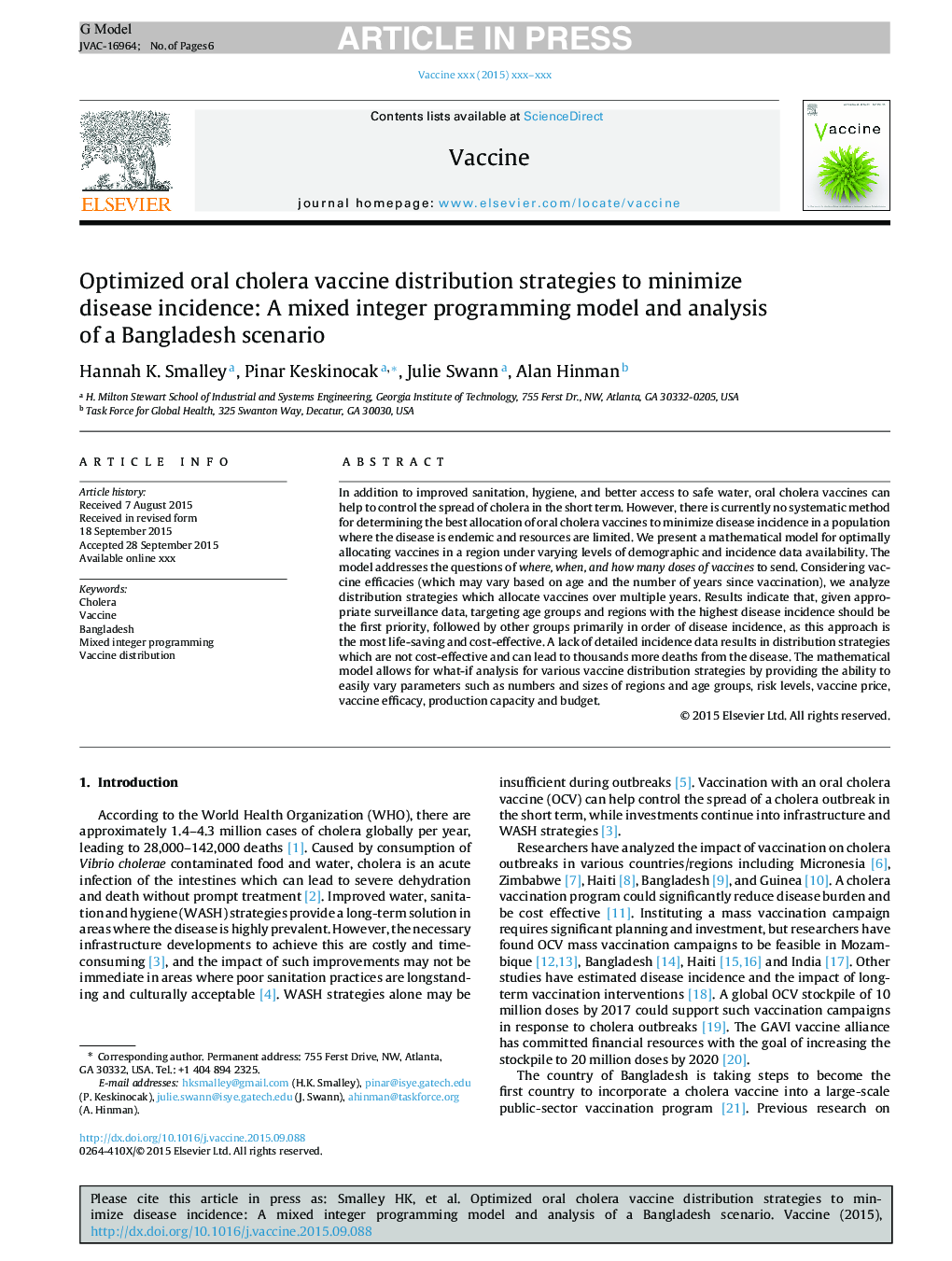| Article ID | Journal | Published Year | Pages | File Type |
|---|---|---|---|---|
| 10963696 | Vaccine | 2015 | 6 Pages |
Abstract
In addition to improved sanitation, hygiene, and better access to safe water, oral cholera vaccines can help to control the spread of cholera in the short term. However, there is currently no systematic method for determining the best allocation of oral cholera vaccines to minimize disease incidence in a population where the disease is endemic and resources are limited. We present a mathematical model for optimally allocating vaccines in a region under varying levels of demographic and incidence data availability. The model addresses the questions of where, when, and how many doses of vaccines to send. Considering vaccine efficacies (which may vary based on age and the number of years since vaccination), we analyze distribution strategies which allocate vaccines over multiple years. Results indicate that, given appropriate surveillance data, targeting age groups and regions with the highest disease incidence should be the first priority, followed by other groups primarily in order of disease incidence, as this approach is the most life-saving and cost-effective. A lack of detailed incidence data results in distribution strategies which are not cost-effective and can lead to thousands more deaths from the disease. The mathematical model allows for what-if analysis for various vaccine distribution strategies by providing the ability to easily vary parameters such as numbers and sizes of regions and age groups, risk levels, vaccine price, vaccine efficacy, production capacity and budget.
Related Topics
Life Sciences
Immunology and Microbiology
Immunology
Authors
Hannah K. Smalley, Pinar Keskinocak, Julie Swann, Alan Hinman,
